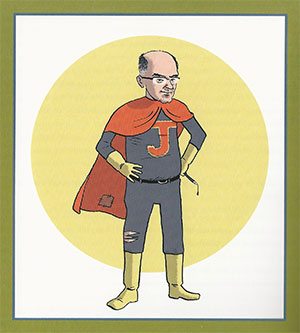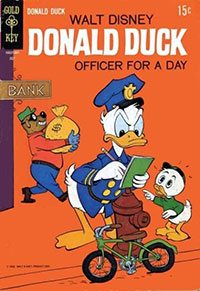 When I began working as, and thinking of myself as, a graphic designer, I assumed that all of my ideas would have to spring out of my mind … and that was terrifying. (Think of the oft-asked question, “Where do your ideas come from?”) I didn’t think I was creative enough or widely traveled enough or even educated enough as a graphic designer to come up with ideas that would translate into smart, pleasing designs on paper or a computer screen.
When I began working as, and thinking of myself as, a graphic designer, I assumed that all of my ideas would have to spring out of my mind … and that was terrifying. (Think of the oft-asked question, “Where do your ideas come from?”) I didn’t think I was creative enough or widely traveled enough or even educated enough as a graphic designer to come up with ideas that would translate into smart, pleasing designs on paper or a computer screen.
Then I talked and worked with other graphic designers. I learned that they had folders full of “reference material,” designs they admired, cut out of magazines and newspapers, along with photos they’d taken and words typeset in innovative ways. And that sounded liked cheating to me. Were they just copying other people’s designs?
I began collecting my own reference materials (books, magazine pages, type, color swatches) and organizing them into folders and notebooks.
As I became more experienced, I understood that looking at reference materials was not copying because somewhere during the creative process my brain added its own concepts and my design seldom looked anything like the references I had used for a project.
So many young people are interested in creating their own comics and graphic novels. They have stories to tell and they want to do it in a visual way. There’s a learning curve. They’ve probably read enough “reference materials” when they begin, enough that they intuitively understand sequence, the gaps in time and story, and the conventions of dialogue bubbles and frames. They may begin by copying their favorites, but what they’ve read informs their storytelling and what they create will be entirely their own.

How refreshing to have Leonard Marcus’ book of interviews, Comics Confidential: Thirteen Graphic Novelists Talk Story, Craft, and Life Outside the Box (Candlewick Press). It’s a reference material of a completely different type, invaluable really, because it shares how these thirteen much-admired artists tell their own stories. We get a peek into their lives, their experiences, their notions of art and the work they’ve done before they achieved their much-admired status.
Every interview, whether I know the work of the artist or not, held me riveted to their story, their experiences, their gaining of knowledge. I loved reading that many of them worked with a group of like-minded comics artists, learning and developing together. These interviews instill confidence and surefootedness. As a young and budding storyteller, I know that tidbits from these biographies would change how I work and how I think about my images and scripts.
For instance, Danica Novgorodoff shares that, for The Undertaking of Lily Chen, “I would envision each scene as a scene in a film. Sometimes I would have to stop myself and realize, ‘This is not going to work in a drawing. I am going to have to write it differently.’ I wrote a scene, for instance, with an empty gray stone city in which mist was rising through the streets. I thought, ‘You can’t actually make mist rise in a drawing, can you?’ I tried it and it didn’t work out nearly as well as it had in my mind! It would have looked beautiful in a film.”
What you see clearly in your mind frequently doesn’t translate well into your drawing or screen. You have to do a lot of erasing. Much as the concept of revision is taught by educators in thousands of classrooms, this idea of working on the frames in a comic book page until they are telling the best story possible, both in words and pictures, can be enormously freeing and encouraging.

In this book, each interview subject created an original two-page story. Both the finished comic and an original sketch are shared. Marcus tells us in the caption for the “Turf” sketch that Novgorodoff “not only specified more background detail but also moved more action to the foreground and turned more of her characters to face us.” That’s essential information!

The comic artists telling many of our favorite graphic stories are interviewed for this book:
- Kazu Kibuishi, who keeps his fans breathless with anticipation for the next volume in the Amulet series.
- Hope Larson, astounding story reteller of Madeleine L’Engle’s A Wrinkle in Time.
- Matt Phelan, who has graced us with exceptional storytelling and art in books like Bluffton and The Storm in the Barn.
- James Sturm, the brilliant storyteller and instructor behind the Adventures in Cartooning series.
- Sara Varon, well-loved for Odd Duck and President Squid and Robot Dreams.
- Gene Luen Yang, whose Avatar, Shadow Hero, and Secret Coder series all show the brilliance for which he was awarded a MacArthur Genius Grant.
These are just a few of the mighty talents interviewed for Comics Confidential. Marcus, who is a master at asking questions that bring forth the information Every Reader wants to know, has created a book formatted beautifully, brimming with elements that readers will pore over, with a helpful bibliography in the back matter.
If you’re an educator, this book will open your eyes to the skill and imagination and wellsprings of creativity from which our very best graphic novelists for young readers draw (tired pun, but apt). You’ll understand and appreciate graphic novels and comic books in a way you haven’t done before reading these interviews.
Your youngest budding artists may have a hard time reading the book if their reading level doesn’t match the book’s vocabulary but Comics Confidential is also a powerful incentive to persevere so you can learn from the masters.
If you have a small group of interested comics creators in your room, reading the interviews out loud and discussing them, particularly with some of that artist’s books at hand to review, would inform those students … and make you look awfully smart.
 I have loved comics since I read my first Donald Duck comic book in the first decade of my life. I quickly became enamored of superhero comics. I wasn’t allowed to buy them but thankfully my cousins were. I often spied one under a coffee table and took myself surreptitiously into a quiet room to read it before we went home. As an adult, I continue to love the visual nature of the stories and the different, inventive ways in which stories are told by comics artists. Comics Confidential is a dream-come-true, allowing me to “meet” the visual storytellers I admire greatly. I consider this book an essential purchase for every library and classroom.
I have loved comics since I read my first Donald Duck comic book in the first decade of my life. I quickly became enamored of superhero comics. I wasn’t allowed to buy them but thankfully my cousins were. I often spied one under a coffee table and took myself surreptitiously into a quiet room to read it before we went home. As an adult, I continue to love the visual nature of the stories and the different, inventive ways in which stories are told by comics artists. Comics Confidential is a dream-come-true, allowing me to “meet” the visual storytellers I admire greatly. I consider this book an essential purchase for every library and classroom.

Thanks for this article, Vicki. I have just about every book Leonard Marcus has written. I will be adding this to my shelves.
It’s already spurred me on to several projects, Heidi. I know you’ll enjoy it.